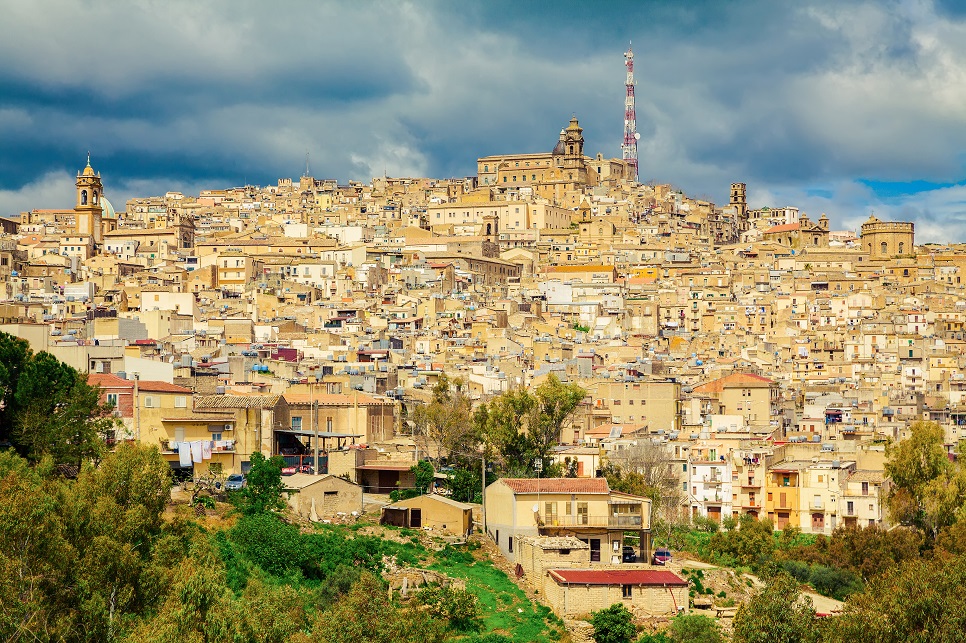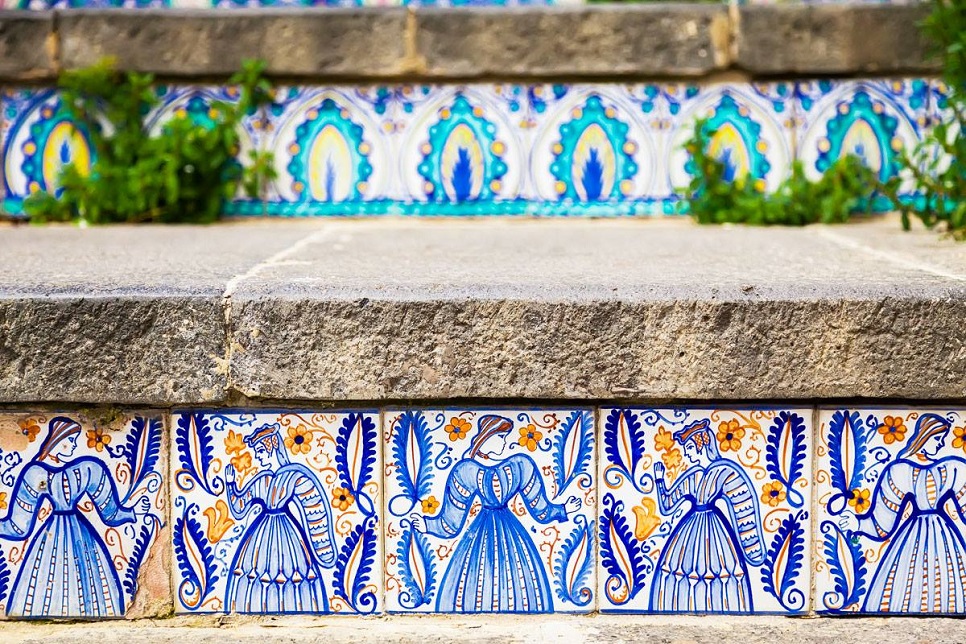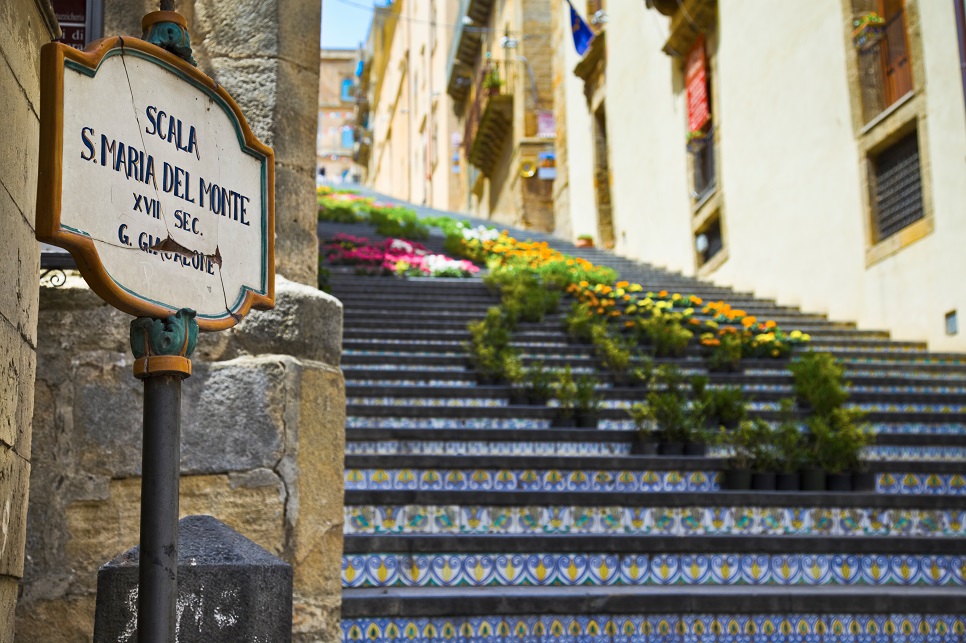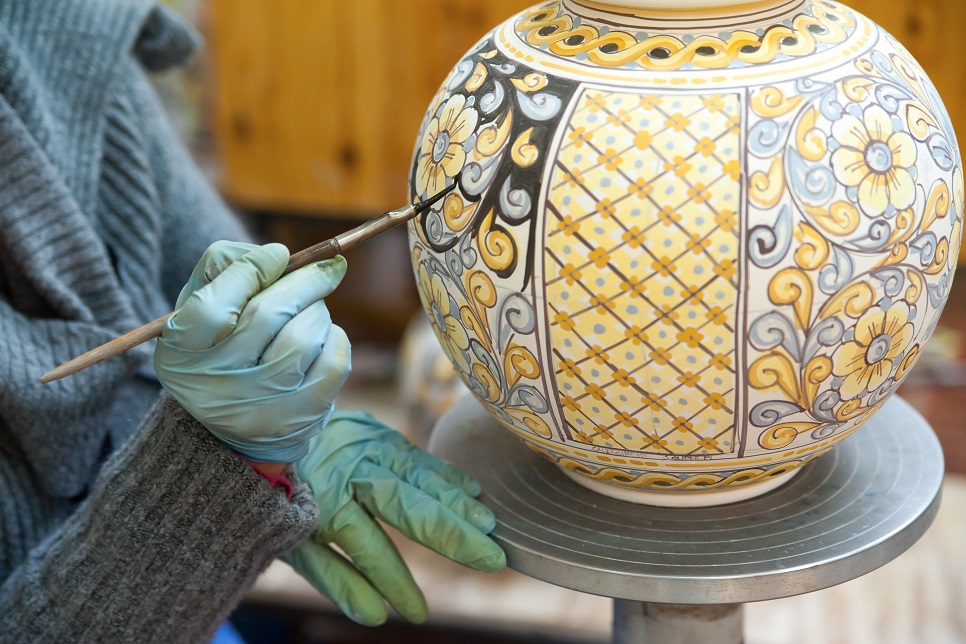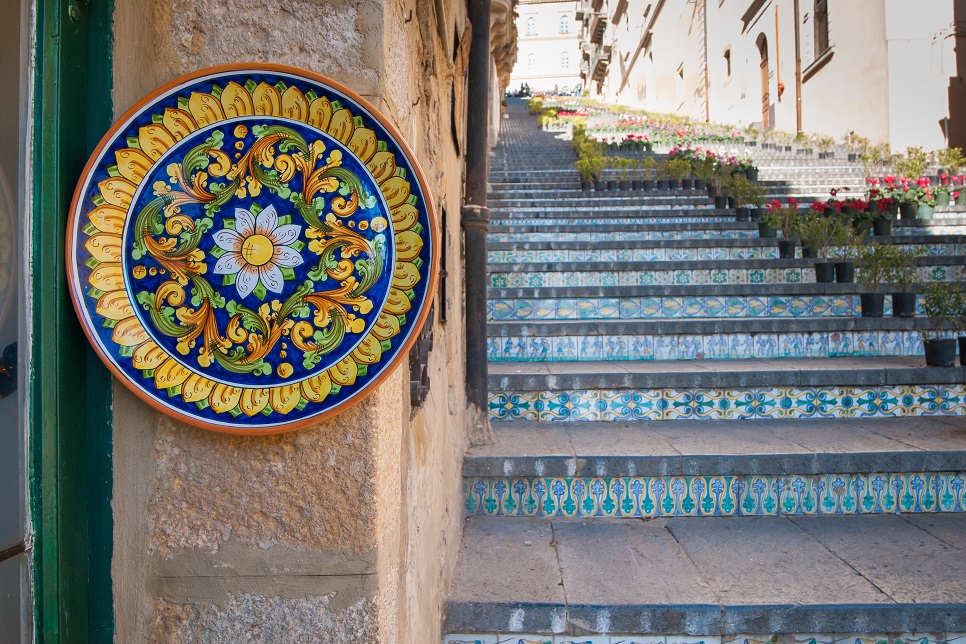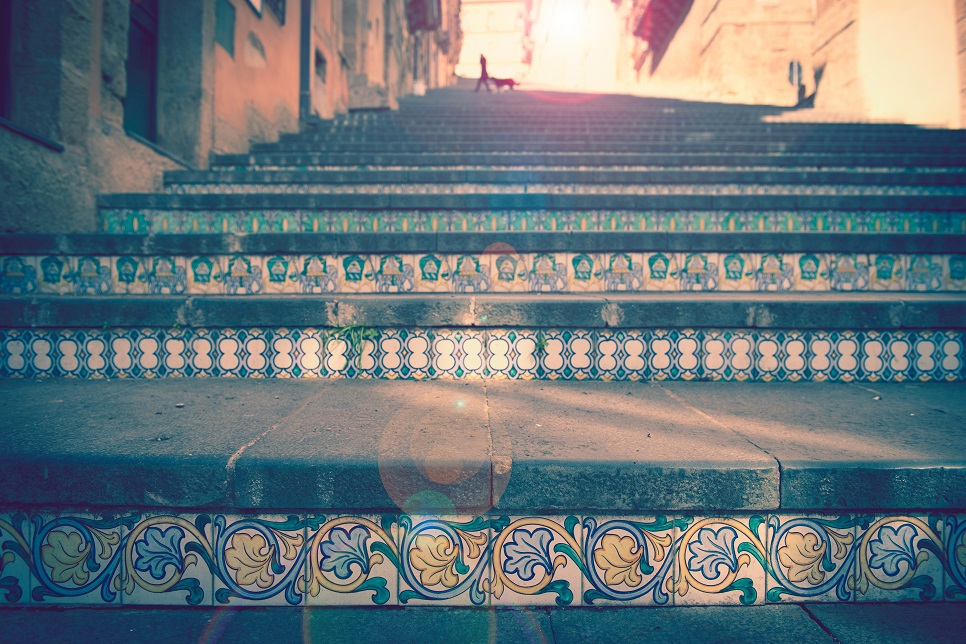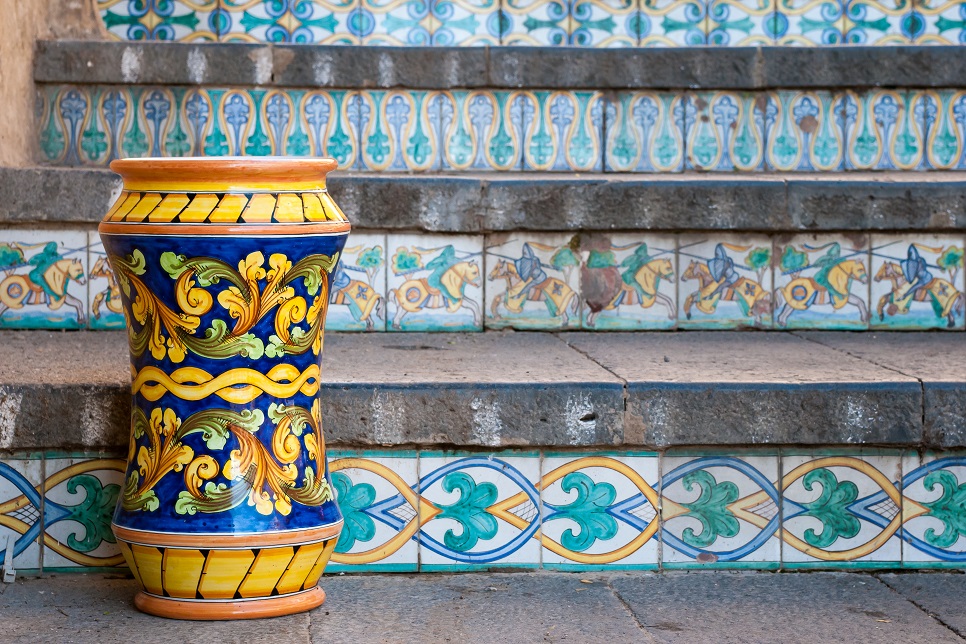The ‘city of Sicilian ceramics’ is a lively Baroque town in central Sicily with brightly colour ceramic tiles at every turn, a regional ceramics museum and a magnificent collection of Baroque buildings and churches.
While the town dates to pre-Greek times, its name is Arabic in origin (‘kalat’ and ‘gerun’ meaning ‘castle’ and ‘cave’). It was almost completely destroyed by the 1693 earthquake but, in keeping with many of the towns of Sicily’s south east, rebuilt with the frills and flair of the Baroque period.
The abundance of local clay resulted in a legacy of pottery production as early as the 2nd century BC. The Romans, Greeks, Arabs, Spanish and the Normans each added their own style and techniques to the local ceramics which have been used for centuries to embellish private and public buildings, churches, and piazzas. The colours used are strongly evocative of the island, with warm ochre yellows, blues and soft mossy greens.
The highlight of the town is the magnificent Scalinata di Santa Maria del Monte, connecting the lower town with the older upper part, and boasting 142 individually designed and decorated steps. Spectacular at any time, the staircase is at its best on the 25 July when the city celebrates its patron saint San Giacomo with the lighting of thousands of flickering candles, artfully arranged into a specific scene known as the ‘Illuminata’. In May, the staircase is carpeted with an enormous floral display during the ‘Infiorita’ festival.
Caltagirone
World Heritage Site by UNESCO since 2002
